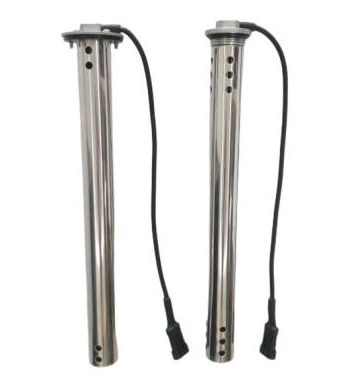 Wema kus level senders are the type of sensors used in tanks. They measure the levels of gas or liquid. The senders are available in a variety of different designs. Some of them can have reed switches spaced between 12 and 21 mm. Others can use a two-tank gauge panel to display the levels.
Wema kus level senders are the type of sensors used in tanks. They measure the levels of gas or liquid. The senders are available in a variety of different designs. Some of them can have reed switches spaced between 12 and 21 mm. Others can use a two-tank gauge panel to display the levels.
Holding Tank Level Sender
A holding tank level sender is an excellent way to keep track of the water levels in your boat. It is designed to send data to a remote-mounted gauge. The most effective ones are made of stainless steel and are enclosed in a removable cage. Luckily, they are available in several sizes with outputs ranging from 0 to 10 volts.
It’s hard to beat a multi-tank gauge panel and its associated sensors for a simple way to manage your vessel’s septic and freshwater systems. For example, the S3H sender from wema kus level senders features a float attached to a protective outer tube. As a result, the unit is resistant to blackwater and can extend its sensing range to more than three-quarters of the tank. You can replace the shield for maintenance or cleaning purposes. This unit is an economical choice for the do-it-yourselfer. Depending on your budget, you can opt for a single-tank or multi-tank model.
Using a sensor as your primary source of water level monitoring can be expensive, but an intelligent choice will save you money in the long run. A paired pair of tank-level senders is the most efficient way to monitor the state of your tanks.
2 Tank Gauge Panel
Wema is a leading manufacturer of fuel and water level gauges. Their range includes products for several different types of tanks. They offer models designed to be used in European and American sender units.
The CP-2 is a tank gauge panel that allows the user to monitor two tanks with a simple switch. It saves space on the dashboard and eliminates the need for multiple gauges. It uses a center-mounted button to allow the user to check the fluid levels in each tank quickly.
Wema water level gauges are available in standard colors or a stainless steel bezel. They also come with a nitrile gasket seal for a reliable and easy installation. These gauges use a DPDT switch to connect the sensor and meter. You can choose from an American resistance (240-20ohms) or a European resistance (0-190ohms).
Wema also manufactures a hold tank level sender. It is suitable for freshwater, greywater, and blackwater tanks. The sender is made of AISI 316 stainless steel and comes with screws. As with all water level sensors, it is advisable to check the sender periodically to ensure it is working correctly. In addition, the sensor should be cleaned occasionally to avoid the buildup of animal fats in the waste.
Reed Switches Spaced 12-21mm
Wema/KUS offers Reed Switches Spaced 12-21mm in their level senders. It makes them ideal for diesel, biodiesel, ethanol, gas, and 240-33 Ohm gauges. The reed switches feature a nitrile rubber float and stainless steel construction. They fit into the industry standard bolt-hole pattern and include a gasket. These level senders provide accurate readings of fuel levels.
While Reed Switches Spaced 12-21mm have advantages over other types of level senders, there are also certain disadvantages. One disadvantage is that the reed switch’s electrical characteristics are subject to changes as it is exposed to external forces. For example, it can be affected by magnetic interference, coils, steel plates, transformers, etc. You should also be aware of the resonant frequencies of the reed switches. It is recommended that you do not operate the reed switches above these resonant frequencies.
Another disadvantage of the reed switch is the possible damage to the glass to metal seal. Because of this, it is essential to take special precautions when welding current. Specifically, you should be aware of high induced voltages. It would be best if you also avoided excessive exposure time. To ensure proper welding procedures, you should follow recommended soldering conditions. Those conditions include temperatures of 280 to 300 degrees C for hand and wave soldering and 250 to 300 degrees C for hand and wade soldering.






